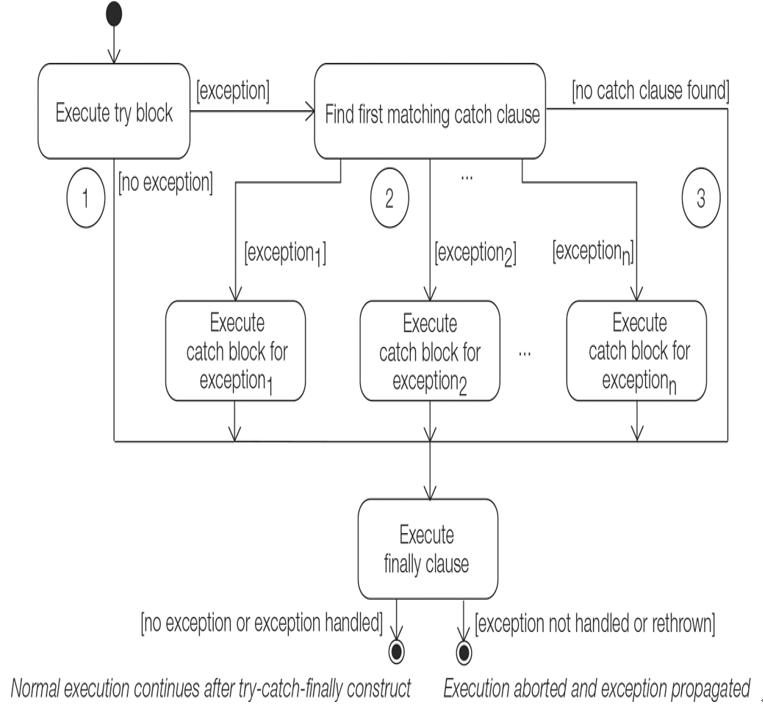The java.lang.Exception Class
The class Exception represents exceptions that a program would normally want to catch. Its subclass java.lang.RuntimeException represents many common programming errors that can manifest at runtime (see the next subsection). Other subclasses of the Exception class, excluding the RuntimeException class, define what are known as checked exceptions (p. 374) that particularly aid in building robust programs. Some common checked exceptions are presented below.
java.lang.ClassNotFoundException
The class ClassNotFoundException is a subclass of the Exception class that signals that the JVM tried to load a class by its string name, but the class could not be found. A typical example of this situation is when the class name is misspelled while starting program execution with the java command. The source in this case is the JVM throwing the exception to signal that the class cannot be found.
java.io.IOException
The class IOException is a subclass of the Exception class that represents I/O-related exceptions that are found in the java.io package (EOFException, FileNotFound-Exception, NotSerializableException). Chapter 20, p. 1231, and Chapter 21, p. 1285, provide ample examples of contexts in which I/O-related exceptions can occur.
java.io.EOFException
The class EOFException is a subclass of the IOException class that represents an exception that signals that an end of file (EOF) or end of stream was reached unexpectedly when more input was expected—that is, there is no more input available. Typically, this situation occurs when an attempt is made to read input from a file when all data from the file has already been read, often referred to as reading past EOF.
java.io.FileNotFoundException
The class FileNotFoundException is a subclass of the IOException class that represents an exception that signals an attempt to open a file by using a specific pathname failed—in other words, the file with the specified pathname does not exist. This exception can also occur when an I/O operation does not have the required permissions for accessing the file.
java.io.NotSerializableException
The class NotSerializableException is a subclass of the IOException class that represents an exception that signals that an object does not implement the Serializable interface that is required in order for the object to be serialized (§20.5, p. 1261).
java.sql.SQLException
The class SQLException is a subclass of the Exception class that represents an exception that can provide information about various database-related errors that can occur. Chapter 24 provides examples illustrating such situations.
java.text.ParseException
The class ParseException is a subclass of the Exception class that represents an exception that signals unexpected errors while parsing. Examples of parsing date, number, and currency where this exception is thrown can be found in §18.5, p. 1116.

